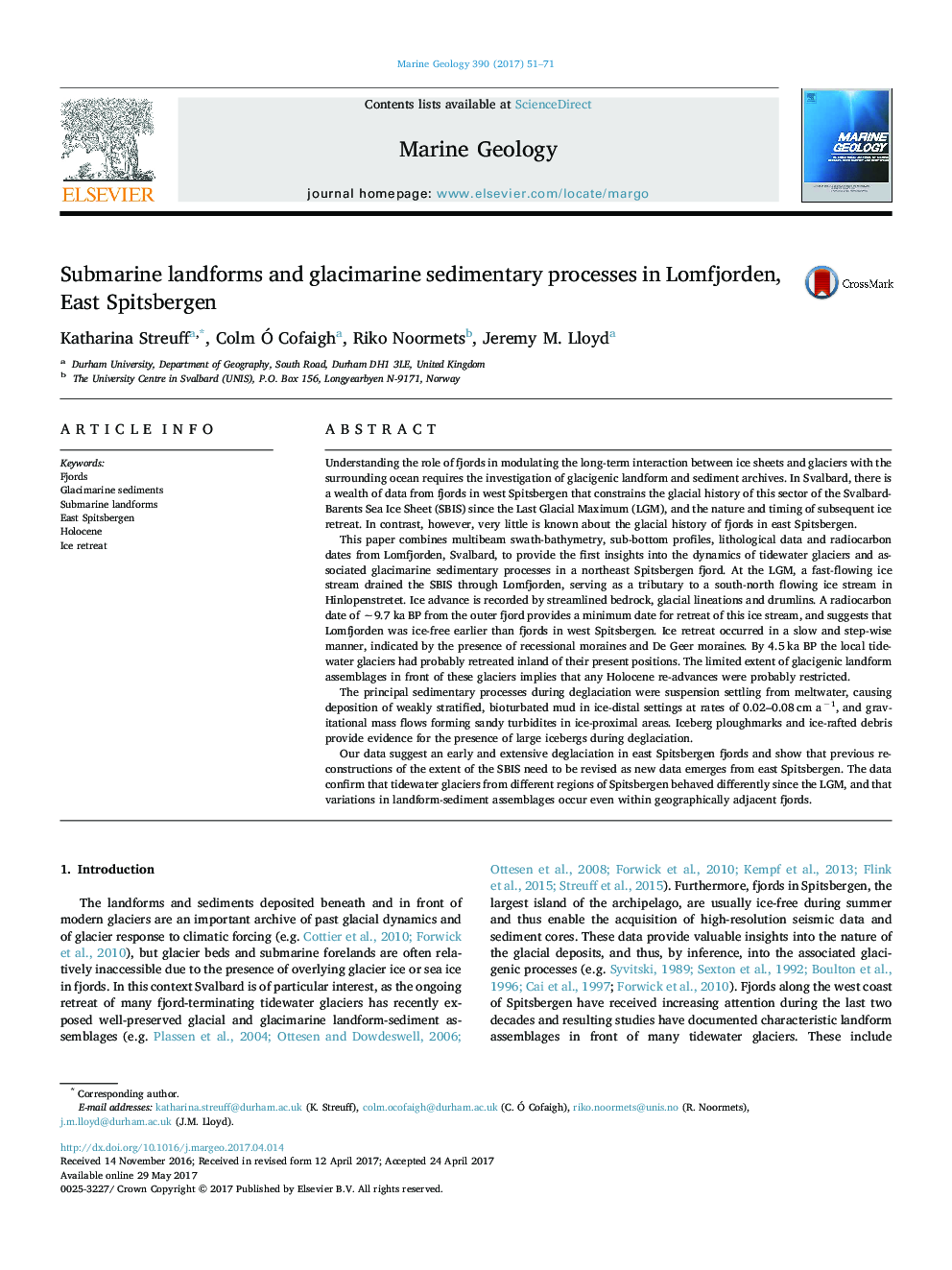| کد مقاله | کد نشریه | سال انتشار | مقاله انگلیسی | نسخه تمام متن |
|---|---|---|---|---|
| 5784362 | 1639062 | 2017 | 21 صفحه PDF | دانلود رایگان |
- Glacial sediment-landform assemblages are documented from a NE Spitsbergen fjord.
- Lomfjorden channelled a fast-flowing ice stream during the Last Glacial Maximum.
- The outer part of Lomfjorden was ice-free prior to 9.7Â ka BP.
- Deglaciation was early and extensive. Glaciers underwent restricted LIA re-advances.
- Sediment accumulation rates in mud decreased from â¼0.8 to 0.2 mm a â1 in distal areas.
Understanding the role of fjords in modulating the long-term interaction between ice sheets and glaciers with the surrounding ocean requires the investigation of glacigenic landform and sediment archives. In Svalbard, there is a wealth of data from fjords in west Spitsbergen that constrains the glacial history of this sector of the Svalbard-Barents Sea Ice Sheet (SBIS) since the Last Glacial Maximum (LGM), and the nature and timing of subsequent ice retreat. In contrast, however, very little is known about the glacial history of fjords in east Spitsbergen.This paper combines multibeam swath-bathymetry, sub-bottom profiles, lithological data and radiocarbon dates from Lomfjorden, Svalbard, to provide the first insights into the dynamics of tidewater glaciers and associated glacimarine sedimentary processes in a northeast Spitsbergen fjord. At the LGM, a fast-flowing ice stream drained the SBIS through Lomfjorden, serving as a tributary to a south-north flowing ice stream in Hinlopenstretet. Ice advance is recorded by streamlined bedrock, glacial lineations and drumlins. A radiocarbon date of â¼9.7Â ka BP from the outer fjord provides a minimum date for retreat of this ice stream, and suggests that Lomfjorden was ice-free earlier than fjords in west Spitsbergen. Ice retreat occurred in a slow and step-wise manner, indicated by the presence of recessional moraines and De Geer moraines. By 4.5Â ka BP the local tidewater glaciers had probably retreated inland of their present positions. The limited extent of glacigenic landform assemblages in front of these glaciers implies that any Holocene re-advances were probably restricted.The principal sedimentary processes during deglaciation were suspension settling from meltwater, causing deposition of weakly stratified, bioturbated mud in ice-distal settings at rates of 0.02-0.08Â cm aâ1, and gravitational mass flows forming sandy turbidites in ice-proximal areas. Iceberg ploughmarks and ice-rafted debris provide evidence for the presence of large icebergs during deglaciation.Our data suggest an early and extensive deglaciation in east Spitsbergen fjords and show that previous reconstructions of the extent of the SBIS need to be revised as new data emerges from east Spitsbergen. The data confirm that tidewater glaciers from different regions of Spitsbergen behaved differently since the LGM, and that variations in landform-sediment assemblages occur even within geographically adjacent fjords.
Journal: Marine Geology - Volume 390, 1 August 2017, Pages 51-71
